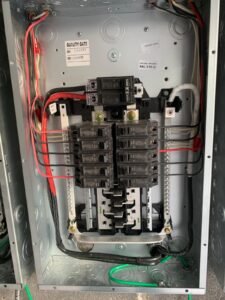Making your home more energy efficient not only helps the environment but also saves you money in the long run. As we become more conscious of our impact on the environment, making our homes more energy-efficient has never been more important. Not only does it reduce your carbon footprint, but it also saves money on energy bills. Whether you’re just starting out or looking to make a few upgrades, here are five practical tips to make your home more energy-efficient.
1. Upgrade to Energy-Efficient Appliances
Why It Matters: Your appliances account for a significant portion of your home’s energy use. Older appliances, especially refrigerators, washing machines, and dishwashers, can be energy hogs.
How to Do It: Look for appliances with the Energy Star label. These models are designed to use less energy without sacrificing performance. For instance, an Energy Star-certified refrigerator can use up to 15% less energy than a standard model. The initial investment in energy-efficient appliances can pay off in the long run through lower utility bills.
2. Improve Your Home’s Insulation
Why It Matters: Poor insulation can cause your heating and cooling systems to work overtime, leading to higher energy consumption.
How to Do It: Start by checking your attic, walls, and floors for adequate insulation. If you notice drafts or cold spots, it might be time to add more insulation or upgrade to better materials. In addition to insulation, consider sealing any gaps around windows and doors with weatherstripping or caulk. This will prevent air leaks and help maintain a consistent indoor temperature.
3. Install a Programmable Thermostat
Why It Matters: Heating and cooling account for nearly half of the average household’s energy bill. A programmable thermostat allows you to control your home’s temperature more efficiently.
How to Do It: Invest in a programmable or smart thermostat that allows you to set different temperatures for different times of the day. For example, you can lower the heat while you’re at work and have it automatically increase just before you return home. Some smart thermostats even learn your schedule and adjust themselves accordingly, optimizing energy use without sacrificing comfort.
4. Switch to LED Lighting
Why It Matters: Lighting is another area where you can make easy and impactful energy savings. Traditional incandescent bulbs use a lot of energy and have a shorter lifespan.
How to Do It: Replace all your incandescent bulbs with LED (light-emitting diode) bulbs. LEDs use about 75% less energy and last 25 times longer than incandescent lighting. You can find LED bulbs in a variety of colors and brightness levels, making them suitable for every room in your house.
5. Embrace Renewable Energy Sources
Why It Matters: Renewable energy reduces reliance on fossil fuels, decreases greenhouse gas emissions, and can significantly lower your energy costs over time.
How to Do It: Consider installing solar panels on your roof. While the upfront cost can be high, solar energy can drastically reduce or even eliminate your electricity bills. Many areas offer tax incentives or rebates for homeowners who install solar panels, making it a more affordable option. Additionally, you can look into solar water heaters or small-scale wind turbines, depending on your location and budget.
Conclusion:
Making your home more energy-efficient doesn’t have to be overwhelming or expensive. Start with small changes, like upgrading your light bulbs or sealing drafts, and gradually work your way up to larger investments like solar panels or new appliances. Every step you take not only saves energy and money but also contributes to a healthier planet. So, why wait? Start making your home more energy-efficient today, and enjoy the benefits for years to come!
More Information Click here.

